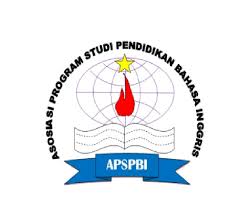Can Artificial Intelligence (AI) like QuillBot AI Assist Students’ Writing Skills? Assisting Learning to Write Texts using AI
DOI:
https://doi.org/10.22515/elereviews.v3i2.7533Keywords:
digital technology, artificial intelligence, Quillbot AI, writing skills, teaching writingAbstract
At present, it is undeniable that the influence of Artificial Intelligence (AI) in learning English is increasing. AI helps students develop English sentences. This study aims to assist eleventh-grade students’ skills in creating hortatory exposition texts using QuillBot AI. It was Classroom Action Research (CAR) using the Kemmis, McTaggart, and Nixon paradigm conducted in two cycles, each consisting of three meetings. Each cycle included planning, acting, observing, and reflecting. The participants of this study were students from XI IPA 2A, consisting of 20 students. The data collection technique employed was a test. Before giving treatment, the students did a pre-test in the form of a writing test. Then, the researcher taught the students using Quillbot AI in several meetings. A paired sample t-test was administered using the SPSS version 25 to analyze the obtained data. The findings revealed that using QuillBot AI in the writing class considerably improved students’ writing skills. It was demonstrated by the results of the students’ writing test scores. In the pre-test, the students’ mean score was 53.55. Then, after utilizing QuillBot AI, the students’ mean post-test score was 78.90. In addition, the significance of the difference could also be seen in the acquisition of a sig. (2-tailed) value of 0.000, which meant it was smaller than 0.05. Based on the statistics presented, Ho was refused, and Ha was approved, indicating that QuillBot AI’s usage impacted the students’ ability to create hortatory exposition texts.
Downloads
References
Ahmadi, M. R. (2018). The use of technology in English language learning: A literature review. International Journal of Research in English Education (IJREE), 116-125.
Badriyah, L., Kiptiyah, M., & Wijaya, M. K. (2021). The influence of problem-based learning on the students’ writing skill in hortatory exposition text at eleventh grade of SMA Saidiyah Arosbaya. SELL Journal, 6(2), 112-127.
Byrne, D. (1993). Teaching writing skills (new ed.). Longman Group UK.
Halliday, M. A. K., & Hasan, R. (1989). Language, context, and text: Aspects of language in a social semiotic perspective. Oxford University Press.
Huy, N. T. (2015). Problems affecting learning writing skill of grade 11 at Thong Linh High School. Asian Journal of Educational Research, 3(2), 53-69.
Irwan, A. F., Syafei, A. F. R., & Marlina, L. (2018). Students’ ability in writing an analytical exposition text at English Department of Universitas Negeri Padang. Journal of English Language Teaching, 7(1), 169-176.
Kartawijaya, S. (2018). Improving students’ writing skill in writing paragraph through an outline technique. Curricula, 3(3), 152-158. https://doi.org/10.22216/jcc.2018.v3i3.3429
Kemmis, S., McTaggart, R., & Nixon, R. (2014). The action research planner: Doing critical participatory action research. Springer Singapore. https://doi.org/10.1007/978-981-4560-67-2
Kholis, A. (2018). The effectiveness of using video and pictures in teaching writing hortatory exposition text. LingTera, 5(2), 189-198. https://doi.org/10.21831/lt.v5i2.15490
Knapp, P., & Watkins, M. (2005). Genre, text, grammar: Technologies for teaching and assessing writing. UNSW Press.
Knoch, U., May, L., Macqueen, S., Pill, J., & Storch, N. (2016). Transitioning from university to the workplace: Stakeholder perceptions of academic and professional writing demands. IELTS Research Reports Online Series, 1, 1-37.
Kurniati, E. Y., & Fithriani, R. (2022). Post-graduate students’ perceptions of Quillbot utilization in English academic writing class. Journal of English Language Teaching and Linguistics, 7(3), 437-451. https://doi.org/10.21462/jeltl.v7i3.852
Langan, J. (2006). College writing process (11th ed.). The McGraw Hill Companies.
Maulidina, P., & Wibowo, H. (2022). The use of grammarly tools to enrich student’s writing ability. Lingua, 18(2), 179-189. https://doi.org/10.34005/lingua.v18i2.2246
McCarthy, J. (2004). What is artificial intelligence? https://www-formal.stanford.edu/jmc/whatisai.pdf.
Mettetal, G. (2001). The what, why, and how of classroom action research. Journal of the scholarship of teaching and learning, 2(1).
Mozgovoy, M. (2011). Dependency-based rules for grammar checking with language tool. Proceedings of Federated Conference on Computer Science and Information Systems – FedCSIS (pp. 209-212).
Mulyasa. (2009). Praktik penelitian tindakan kelas. Rosdakarya.
Nurfiryalianti, Jamiluddin, & Hastini. (2014). Improving writing skill by using free writing technique. e-Journal of English Language Teaching Society (ELTS), 2(3), 1-15.
Nurmayanti, N., & Suryadi, S. (2023). The effectiveness of using Quillbot in improving writing for students of English Education Study Program. Jurnal Teknologi Pendidikan: Jurnal Penelitian dan Pengembangan Pembelajaran, 8(1), 32. https://doi.org/10.33394/jtp.v8i1.6392
Oshima, A., & Hogue, A. (2006). Introduction to academic writing (3rd ed.). Pearson Education Inc.
Pratama, Y. D. (2021). The investigation of using grammarly as online grammar checker in the process of writing. English Ideas: Journal of English Language Education, 1(2), 46-54.
Toba, R., Noor, W. N., & Sanu, L. O. (2019). The current issues of Indonesian EFL students’ writing skills: Ability, problem, and reason in writing comparison and contrast essay. Dinamika Ilmu, 19(1), 57-73. https://doi.org/10.21093/di.v19i1.1506
Trivette, W. (2020). Upgrade your English writing skills. Winn Trivette II, MA.
Whitaker, A. (2009). Academic writing guide: A step-by-step guide to writing academic papers. City University of Seattle.
Widana, W., & Muliani, P. L. (2020). Uji Persyaratan Analisis. Klik Media.
Downloads
Published
How to Cite
Issue
Section
Citation Check
License
Copyright (c) 2023 Riza Laras Amyatun, Adhan Kholis

This work is licensed under a Creative Commons Attribution-NonCommercial 4.0 International License.
Authors retain copyright and grant the journal right of first publication with the work simultaneously licensed under a Creative Commons Attribution License that allows others to share the work with an acknowledgement of the work's authorship and initial publication in this journal.
This ejournal system and its contents are licensed under
a Creative Commons Attribution-NonCommercial 4.0 International License








